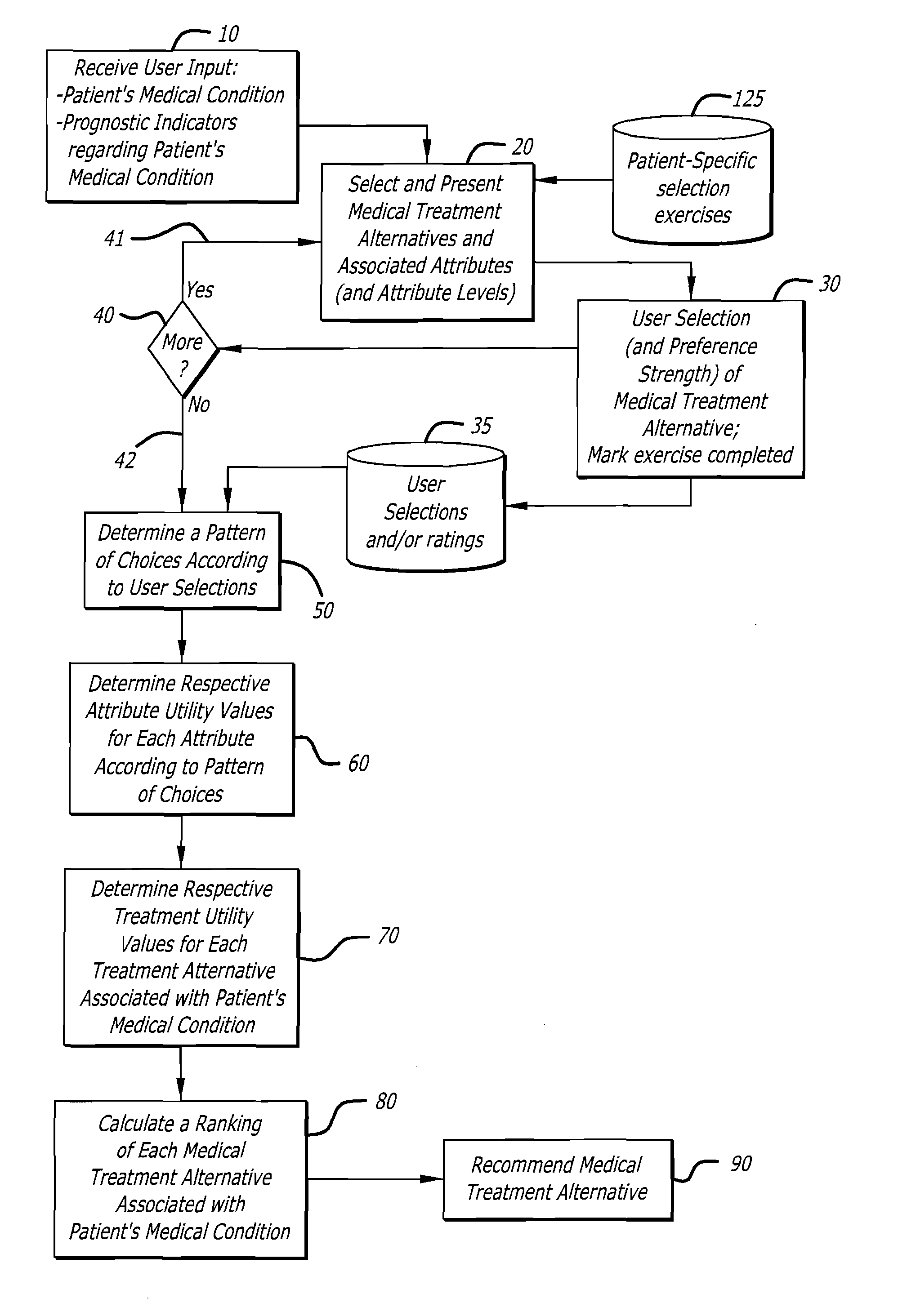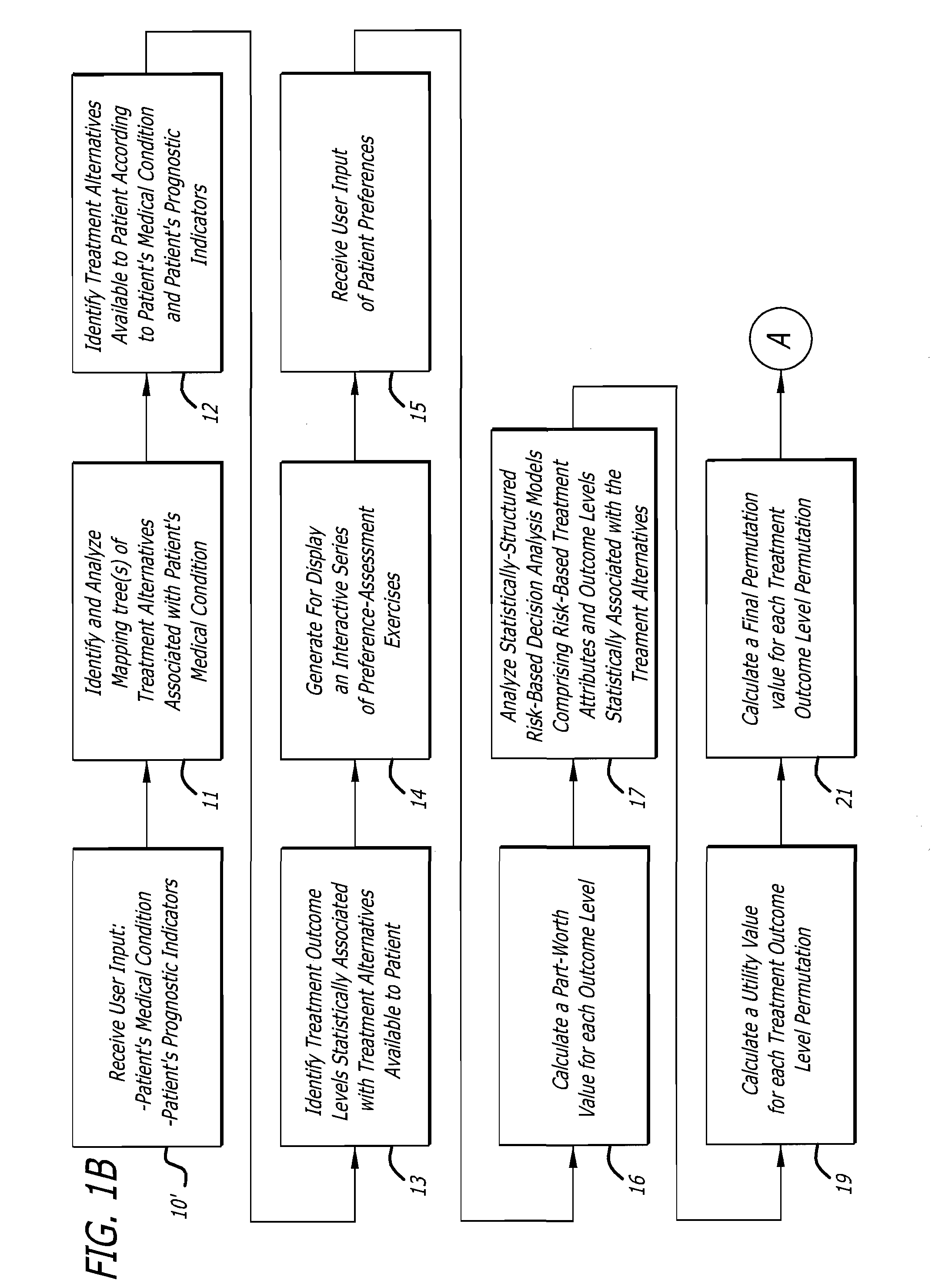Medical care treatment decision support system
- Summary
- Abstract
- Description
- Claims
- Application Information
AI Technical Summary
Benefits of technology
Problems solved by technology
Method used
Image
Examples
Embodiment Construction
[0077]The exemplary embodiment will assist patients with their investigation of, and decision making about, medical treatments that are available to them using conjoint analysis to measure the patient's preferences for risk-associated treatment options. In the exemplary embodiment, the process of patient preference measurement may be viewed in two parts: first, the measurement of the patient's utility for various treatments and associated attributes, effects, features and / or factors, and in particular, the approach to data collection; and second, the specification and estimation of a statistical model to determine utility values based on the patient's / user's responses to the measurement task. Various ways of collecting a patient's / user's input and then modeling the utility values according to that input may be used as will be described further below.
[0078]FIG. 1A is a high-level flow diagram depicting exemplary high-level logic functions of exemplary computer-implemented methods and...
PUM
 Login to View More
Login to View More Abstract
Description
Claims
Application Information
 Login to View More
Login to View More - R&D
- Intellectual Property
- Life Sciences
- Materials
- Tech Scout
- Unparalleled Data Quality
- Higher Quality Content
- 60% Fewer Hallucinations
Browse by: Latest US Patents, China's latest patents, Technical Efficacy Thesaurus, Application Domain, Technology Topic, Popular Technical Reports.
© 2025 PatSnap. All rights reserved.Legal|Privacy policy|Modern Slavery Act Transparency Statement|Sitemap|About US| Contact US: help@patsnap.com



